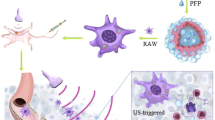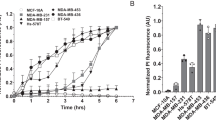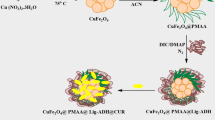Abstract
Sodium phenylacetate (NaPa), a non-toxic phenylalanine metabolite, has been shown to induce in vivo and in vitro cytostatic and antiproliferative effects on various cell types. In this work, we analysed the effect of NaPa on the invasiveness of breast cancer cell (MDA-MB-231, MCF-7 and MCF-7 ras). Using the highly invasive breast cancer cell line MDA-MB-231, we demonstrated that an 18-hour incubation with NaPa strongly inhibits the cell invasiveness through Matrigel (86% inhibition at 20 mM of NaPa). As cell invasiveness is greatly influenced by the expression of urokinase (u-PA) and its cell surface receptor (u-PAR) as well as the secretion of matrix metalloproteinases (MMP), we tested the effect of NaPa on these parameters. An 18-hour incubation with NaPa did not modify u-PA expression, either on MDA-MB-231 or on MCF-7 and MCF-7 ras cell lines, and induced a small u-PA decrease after 3 days of treatment of MDA-MB-321 with NaPa. In contrast, an 18 h incubation of MDA-MB-231 increased the expression of u-PAR and the secretion of MMP-9. As u-PAR is a ligand for vitronectin, a composant of the extracellular matrix, these data could explain the increased adhesion of MDA-MB-231 to vitronectin, while cell adhesivity of MCF-7 and MCF-7 ras was unmodified by NaPa treatment. NaPa induced also an increased expression of both Lymphocyte Function-Associated-1 (LFA-1) and Intercellular Adhesion Molecule-1 (ICAM-1), which was obvious from 18 hour incubation with NaPa for the MDA-MB-231 cells, but was delayed (3 days) for MCF-7 and MCF-7 ras. Only neutralizing antibodies against LFA-1 reversed the decreased invasiveness of NaPa-treated cells. Therefore we can conclude that the strong inhibition of MDA-MB-231 invasiveness is not due to a decrease in proteases involved in cell migration (u-PA and MMP) but could be related both to the modification of cell structure and an increased expression of adhesion molecules such as u-PAR and LFA-1. © 2001 Cancer Research Campaign
Similar content being viewed by others

Article PDF
Change history
16 November 2011
This paper was modified 12 months after initial publication to switch to Creative Commons licence terms, as noted at publication
References
Adam L, Crepin M, Savin C and Israël L (1995) Sodium phenylacetate induces growth inhibition and Bcl-2 down-regulation and apoptosis in MCF-7 ras cells in vitro and in Nude mice. Cancer Res 55: 5156–5160
Adam L, Crepin M and Israël L (1997) Tumor growth inhibition, apoptosis, and Bcl-2 down-regulation of MCF-7 ras tumors by sodium phenylacetate and tamoxifen combination. Cancer Res 57: 1023–1029
Alonso DF, Farina HG, Arregui C, Aon MA and Gomez DE (1999) Modulation of urokinase-type plasminogen activator and metalloproteinase activities in cultured mouse mammary-carcinoma cell: enhancement by paclitaxel and inhibition by nocodazole. Int J Cancer 83: 242–246
Bajou K, Noel A, Gerard RD, Masson V, Brunner N, Holst-Hansen M, Fusenig NE, Carmeliet P, Collen D and Foidart JM (1998) Absence of host plasminogen activator inhibitor 1 prevents tumor invasion and vascularization. Nat Med 4: 923–928
Bianchi E, Cohen R, Thor A, Todd R, Mizukami I, Lawrence D, Ljung B, Sherman M and Smith H (1994) The urokinase receptor is expressed in invasive breast cancer but not in normal breast tissue. Cancer Res 54: 861–866
Bradford M (1976) A rapid and sensitive method for the quantification of microgram quantities of protein utilizing the principle of protein dye-binding. Anal Biochem 72: 248–250
Carriero MV, Del Vecchio S, Franco P, Potena MI, Chiaradonna F, Botti G, Stoppelli MP and Salvatore M (1997) Vitronectin binding to urokinase receptor in human breast cancer. Clin Cancer Res 3: 12299–12308
Edvardson K, Chen W, Rucklidge G, Walsh FS, Öbrink B and Bock E (1993) Transmembrane neural cell-adhesion molecule (NCAM), but not glycosyl-phosphatidyl-anchored NCAM, down-regulates secretion of matrix metalloproteinases. Proc Natl Acad Sci USA 90: 11463–11467
Hayashi H, Shimizu R, Fujii K, Itoh S, Yang D and Onozaki K (1997) Resistance to IL-1 antiproliferative effect, accompanied by characteristics of advanced melanoma, permits invasion of human melanoma cells in vitro, but not metastasis in Nude mice. Int J Cancer 71: 416–421
Hazan RB, Philipps GR, Qiao RF, Norton L and Aaronson SA (2000) Exogenous expression of N-cadherin in breast cancer cells induces cell migration, invasion and metastasis. J Cell Biol 148: 779–790
Holst-Hansen C, Johannessen B, Hoyer-Hansen G, Romer J, Ellis V and Brünner N (1996) Urokinase-type plasminogen activation in three human breast cancer lines correlates with their in vitro invasiveness. Clin Exp Metastasis 14: 297–307
Loridon-Rosa B, Viehl P, Cuadrado C and Burtin P (1988) Comparative distribution of fibronectin and vitronectin in human breast and colon carcinomas. An immunofluorescence study. Am J Clin Pathol 90: 7–16
Ogawa Y, Hirakawa K, Nakata B, Fujihara T, Sawada T, Kato Y, Yoshikawa K and Sowa M (1998) Expression of intercellular adhesion molecule-1 in invasive breast cancer reflects low growth potential, negative lymph node involvement and good prognosis. Clin Cancer Res 4: 31–36
Ossowski L (1992) Invasion of connective tissue by human carcinoma lines: requirement for urokinase, urokinase receptor, and interstitial collagenase. Cancer Res 52: 6754–6760
Paysant J, Vasse M, Soria J, Lenormand B, Pourtau J, Vannier JP and Soria C (1998) Regulation of the u-PA/u-PAR system expressed on monocytes by the deactivating cytokines IL-4, IL-10 and IL-13: consequences on cell adhesion to vitronectin and fibrinogen. Br J Haematol 100: 45–51
Prasanna P, Shack S, Wilson VL and Samid D (1995) Phenylacetate in chemoprevention: in vitro and in vivo suppression of 5-aza-2′-deoxycytidine-induced carcinogenesis. Clin Cancer Res 1: 865–871
Samid D, Shak S and Sherman LT (1992a) Phenylacetate: a novel nontoxic inducer of tumor cell differenciation. Cancer Res 52: 1988–1992
Samid D, Yeh A and Prasanna P (1992b) Induction of erythroid differentiation and fetal hemoglobin production in human leukemic cells treated with phenylacetate. Blood 80: 1576–1581
Schmitt M, Harbeck N, Thomssen C, Wilhelm O, Magdolen V, Reuning U, Ulm K, Hofler H, Janicke F and Graeff H (1997) Clinical impact of the plasminogen activation system in tumor invasion and metastasis: prognostic relevance and target for the therapy. Thromb Haemost 78: 285–296
Suzuki N, Urano J and Tamanoi F (1998) Farnesyltransferase inhibitors induce cytochrome c release and caspase 3 activation preferentially in transformed cells. Proc Natl Acad Sci USA 95: 15356–15361
Tatsumi T, Shimazaki C, Goto H, Araki S, Sudo Y, Yamagata N, Ashihara E, Inaba T, Fujita N and Nakagawa M (1996) Expression of adhesion molecules on myeloma cells. J Cancer Res 87: 837–842
Thibout D, Di Benedetto M, Kraemer M, Sainte-Catherine O, Derbin C and Crepin M (1998) Sodium phenylacetate modulates the synthesis of autocrine and paracrine growth factors secreted by breast cancer cell lines. Anticancer Res 18: 2657–2662
Thibout D, Kraemer M, Di Benedetto M, Saffar L and Crepin M (1999) Sodium phenylacetate (NaPa) induces modifications of the proliferation, the adhesion and the cell cycle of tumoral epithelial breast cells. Anticancer Res 19: 2121–2126
Author information
Authors and Affiliations
Rights and permissions
From twelve months after its original publication, this work is licensed under the Creative Commons Attribution-NonCommercial-Share Alike 3.0 Unported License. To view a copy of this license, visit http://creativecommons.org/licenses/by-nc-sa/3.0/
About this article
Cite this article
Vasse, M., Thibout, D., Paysant, J. et al. Decrease of breast cancer cell invasiveness by sodium phenylacetate (NaPa) is associated with an increased expression of adhesive molecules. Br J Cancer 84, 802–807 (2001). https://doi.org/10.1054/bjoc.2000.1648
Received:
Revised:
Accepted:
Published:
Issue date:
DOI: https://doi.org/10.1054/bjoc.2000.1648
Keywords
This article is cited by
-
Sodium phenylacetate inhibits the Ras/MAPK signaling pathway to induce reduction of the c-Raf-1 protein in human and canine breast cancer cells
Breast Cancer Research and Treatment (2009)
-
The effect of phenylacetate on the expansion and cytotoxic activity of adherent lak cells from patients with hepatocellular carcinoma
Chinese Journal of Cancer Research (2002)


